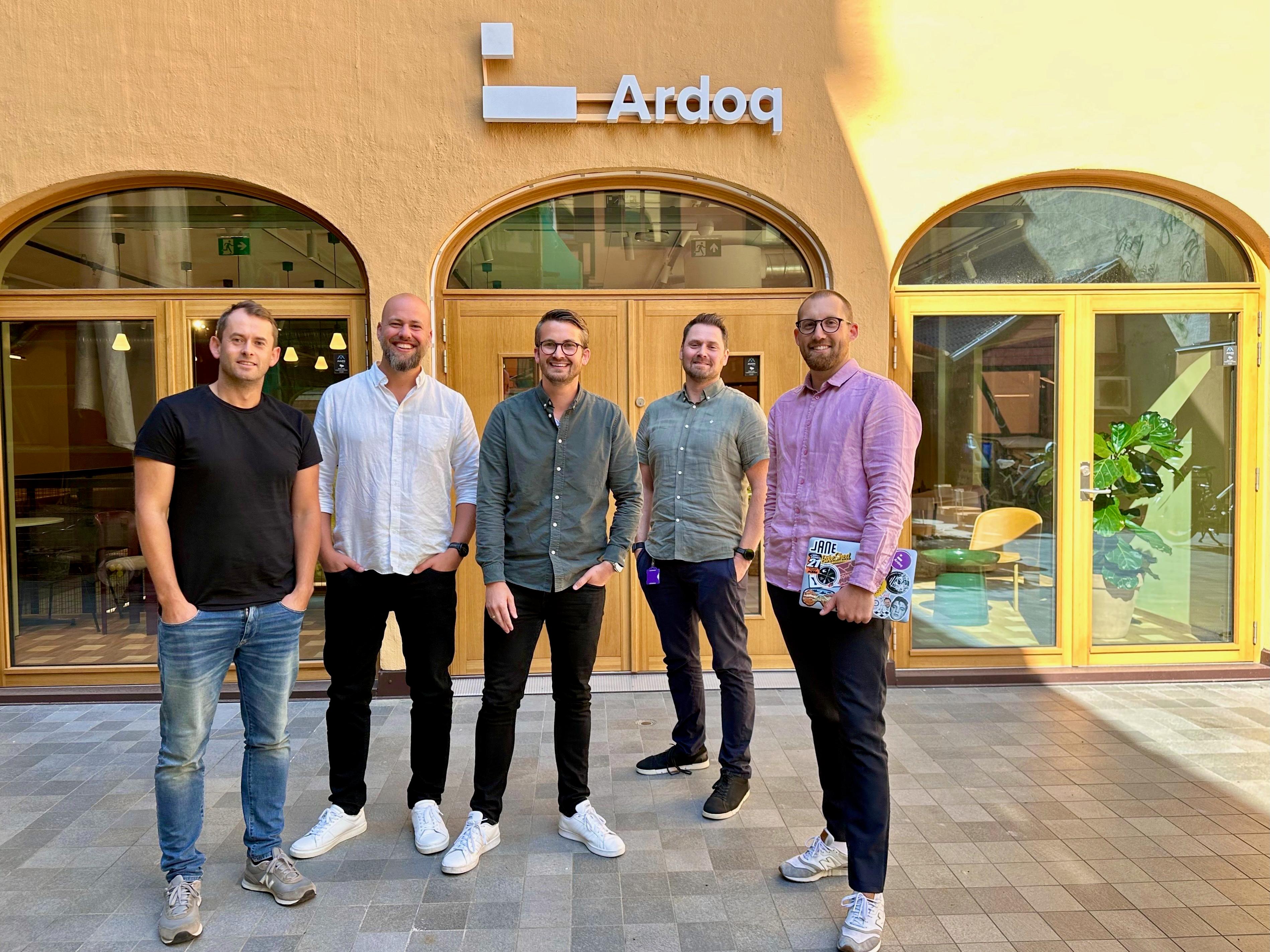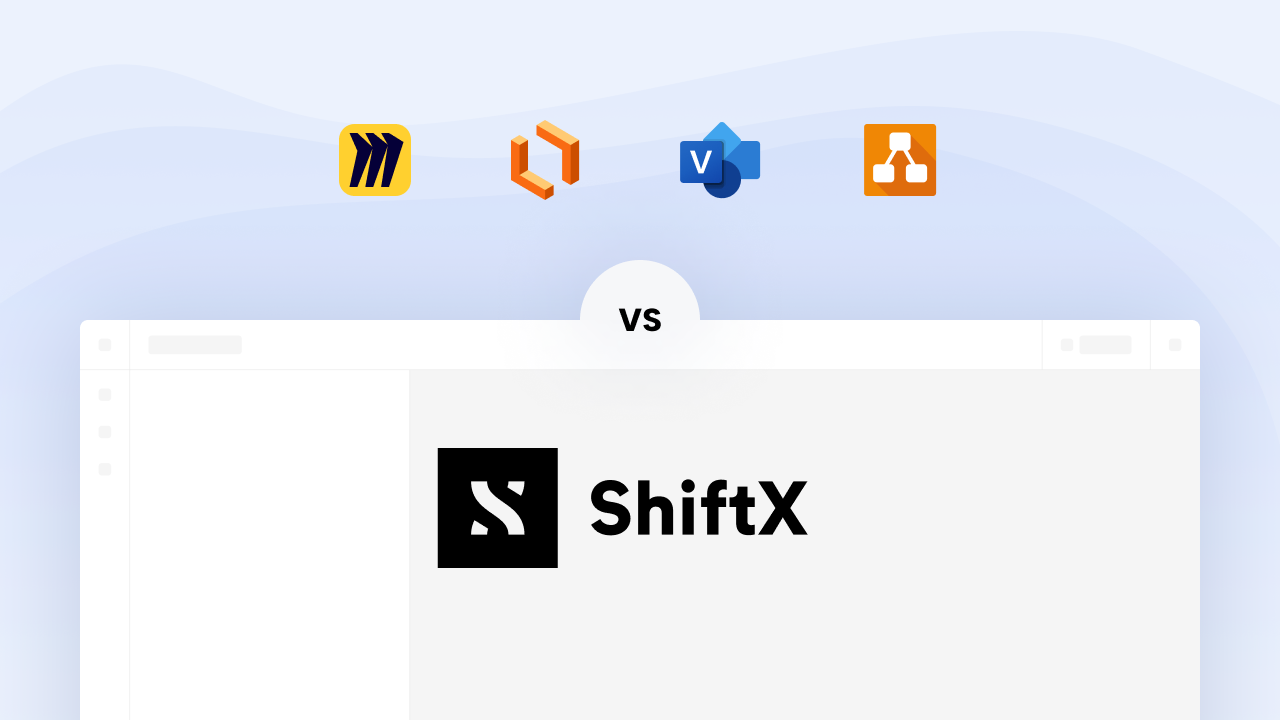
A new way to do business process modeling
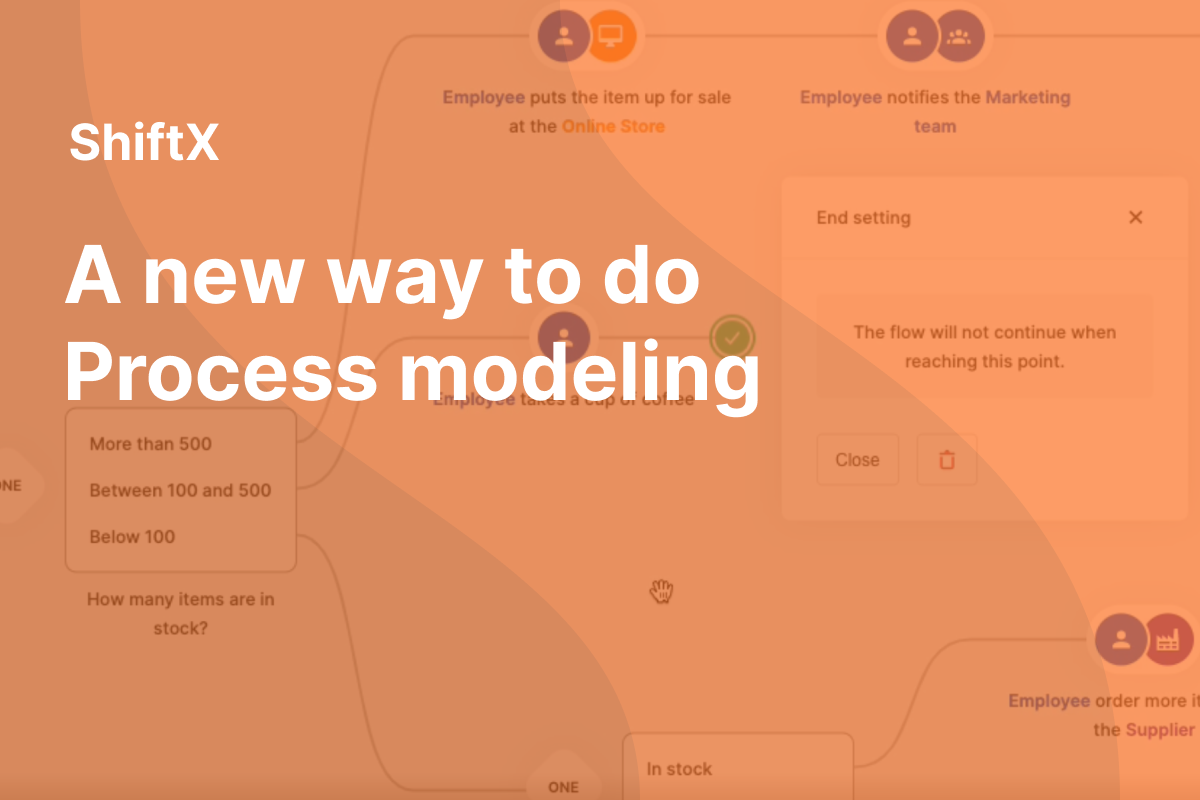
Some call it process mapping, others process modeling, or even process visualization.
The terms are often used to describe the same thing – the procedure of modeling out a clearer picture of the as-is process, how it's executed today. Process modeling lets non-technical people across sectors map out and see the full network of processes and workflows at their organization, and use this map as their single source of truth.
In this text we are going to answer these questions:
- What is process modeling?
- What is Business Process Model and Notation (BPMN)?
- What are possible alternatives to BPMN?
- What is process mining, and how is it different to process modeling?
What is process modeling?
A process model or process map is a visual representation of a business process or workflow. Process mapping or modeling is often done using a visual language, a notation with a fixed set of symbols and characters.
Some use "flat" flowcharts or drawing tools, others more complex systems. Different software and programs can often use a different set of notations. The most common notation for modeling and mapping business processes can be said to be Business Process Model and Notation, BPMN.
If you're looking for the right software to map and communicate your processes, read our article on things to consider when looking for a process mapping tool.
Business Process Model and Notation (BPMN) – the most common way of modeling
You’ve probably seen it before: the boxes, arrows, and icons that make up a graphical explanation of how a process or a workflow is supposed to work. You’ve probably also seen a process or a workflow visualized using the Business Process Model and Notation (BPMN).
BPMN is the most common graphical notation used for process modeling today, and a process visualized using BPMN can look something like this (Wikimedia Commons, Iancpierce):
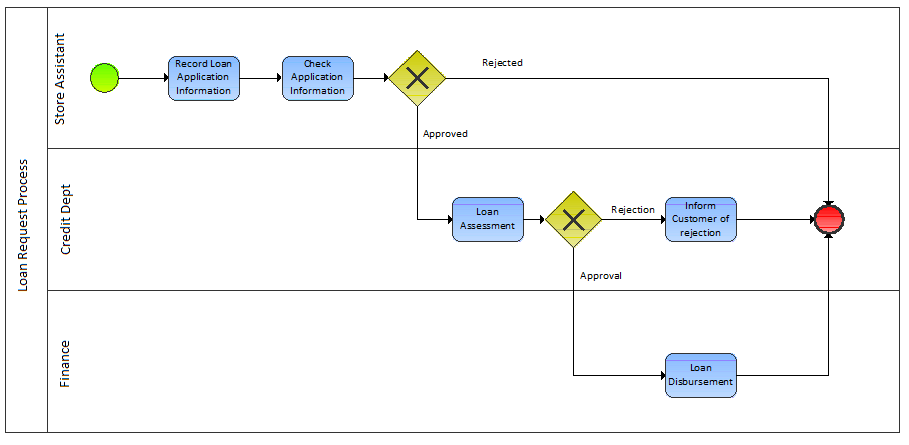
The user-friendly alternative to BPMN
ShiftX, on the other hand, does not use BPMN.
Instead, we’ve created our own notation. After interviewing users and performing research for almost two years, we’ve found that many users (and people that should be doing process modeling but don’t) find BPMN and other contemporary notations complex and difficult to get started with.
The complexity of most notations makes the modeling of business processes much more difficult than it should be and excludes colleagues from contributing with their perspectives. It makes the workplace a less autonomous place. You can read more about why ShiftX doesn’t use BPMN here.
Knowing this, we wanted to create a tool that is user-friendly yet still smart enough to store your important actors, issues, and flows as part of a mapped data process.
Here’s how (part of) a mapped process looks in ShiftX, with our notation:
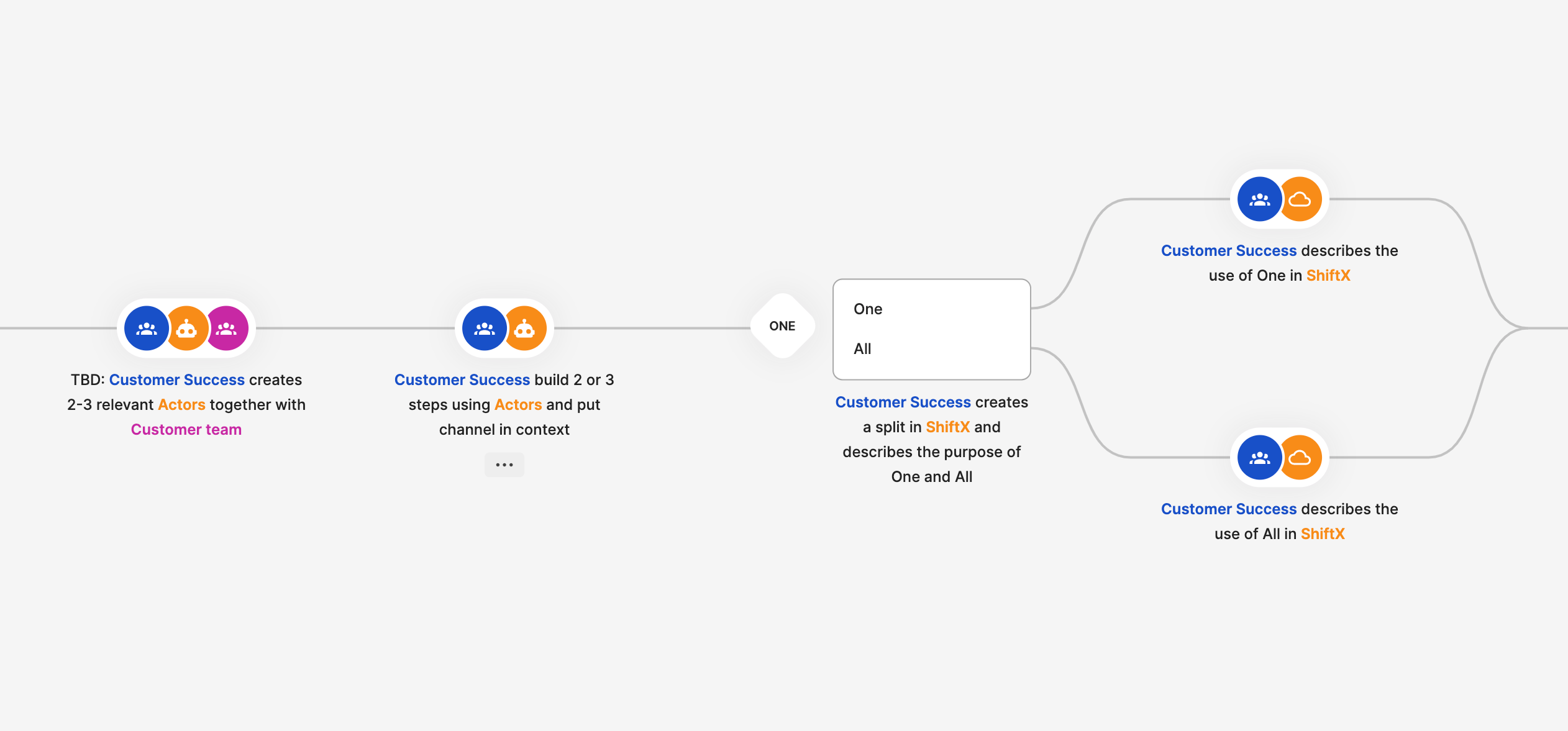
Process modeling vs. process mining
So, what’s the difference between process modeling and this process mining that everyone keeps talking about?
A common answer is that process modeling is about the human understanding of a process, the interaction between people, machines, and organizations, whereas process mining is (often software) about gathering event data and turning it into analyses and insights.
Put (very) bluntly, process modeling versus process mining is man versus machine.
In process modeling, one or more people map out a process from their perspective. Process mining, however, starts from event data. An event log allows a process to be viewed from a particular angle, with each event in the log referring to (1) a particular process instance (called a case), (2) an activity, and (3) a timestamp (Process mining, Wikipedia). It may also include additional event attributes referring to resources, people, systems, etc.
In this way, process mining can be an efficient way to get a good overview of your process (and ways you can improve and streamline it), provided you have access to event data throughout your entire process path.
... or process modeling and process mining
However, a lot of important data is never collected. For example, the event data of essential process steps may not exist. Therefore, to fully understand the whole picture of the as-is situation, we need process modeling.
In such cases, process mining and modeling don’t have to be opposites, but rather should be different techniques that can complement each other.
When event data is insufficient to obtain a complete overview of a process, process modeling can be used to supplement process mining in building a more accurate map of the as-is situation.
ShiftX is a new way to do business process modeling. By focusing on usability and collaboration, we aim to close the knowledge gap between the different groups and sections in your company, organization, or unit by enabling everyone to participate and share their insights.
